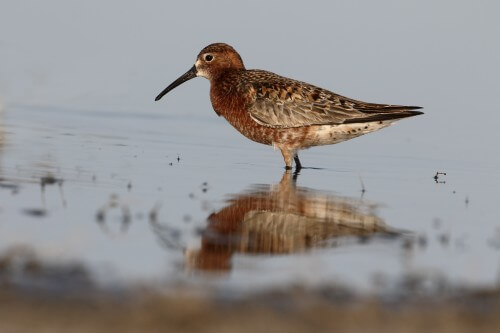What is the connection between birds that don't get wet and a lotus leaf that cleans itself? It turns out that the structure of the feather and the structure of the leaf are similar! On types of surfaces and their effect on water absorption and droplet structure
Written by: Prof. Edward Burmashenko and PhD student Gilad Haniel, Young Galileo

We decided to cool down the hot summer atmosphere a little by thinking about winter, rain and water drops: have you ever sat by the window when it was raining outside and saw birds on the tree? Or have you stood by a lake of water and seen crazy birds? Haven't you wondered how the birds don't get wet? This question has occupied scientists, and for many years they believed that the answer lies in a layer of oil secreted from a special gland in the bird's body that it smears on its feathers and thus they do not get wet. But this is probably not the correct answer. The solution also lies in the special structure of the feathers.
The relationship between the drop and the surface
To understand the topic we will start with a short introduction. Wetting is a concept that defines the form in which a liquid settles on a solid surface: does it completely wet it - that is, is it spread over the surface, or is it "partial wetting", when the drop takes the shape of a sort of hemisphere?
There are two types of surfaces: surfaces on which the liquid drop takes a round shape, called hydrophobic surfaces - water repellent; Surfaces on which the drop takes a flat shape are called hydrophilic surfaces - water lovers. In the hydrophobic surfaces there is a special case where the liquid droplet remains almost completely spherical; These surfaces are called superhydrophobic surfaces - completely water repellent.
The size that characterizes the ratio between the drop and the surface is called the surface energy of the material, and in liquids it is also called the surface tension. The larger it is, the more the liquid will be spread over the solid surface. The spread is characterized by the contact angle between the liquid and the surface. The law describing the effect of surface energy on the size of the angle is called Young's law. In hydrophilic surfaces, the contact angle is less than ninety degrees, and in hydrophobic surfaces, the contact angle is greater than ninety degrees.
lean on air
And how do you get the superhydrophobic feature? We would think that the smoother and more uniform the solid - the easier it will be for the liquid to slide off it. But this is not the case. For example, when you look at a feather under the microscope, you can see that it is built in a very orderly structure, which looks like a tree with a main trunk that splits into the branches that return and split into thinner branches, so that a kind of dense network is created.
When a drop of water is placed on this mesh, the points of contact between it and the feather are very few, and in fact the drop rests mainly on air inside the feather, and as a result the contact angle of the water drop is very large and the drop remains in its spherical shape, which causes it to slide off the feather and not be absorbed by it at all - And so the bird does not get wet!
The same phenomenon also exists in the lotus plant. This plant is considered very special and even holy in the Buddhist religion, due to the fact that it grows on water and always remains clean and beautiful. This is due to it having a structure similar to that seen in feathers - the surface of the lotus is made up of protrusions of different sizes, so that even here a drop placed on the leaf is mainly on air and therefore maintains its spherical shape. This way it is very easy for her to roll and slide off the leaf. Another interesting point that exists in the lotus plant is that, due to this feature, the water that slides off the leaf sweeps away the dirt that accumulates on it - so that the leaf seems to clean itself!
Man follows nature
Today, as part of the trend in science to try to imitate successful characteristics from nature (a field of research and development called biomimicry), scientists are developing surfaces with water-repellent properties based on the unique characteristics of the bird's feather and the lotus plant.
One of the interesting challenges in this field is the creation of surfaces that repel oil - this is due to the low surface tension of the oil, which causes it to completely wet any surface it comes in contact with, even a super-hydrophobic surface.
____
* The authors are from the Department of Physics - Faculty of Natural Sciences, Ariel University
The article appeared in the November issue of Young Galileo – Monthly for curious children
Want to read more? To receive a young Galileo magazine as a gift

One response
exciting!!! Kudos to the physicists who were able to explain the phenomenon. I'm just coughing on a cockroach that visits my yard every morning and I'm amazed how it continues to peck at the grass and look for worms despite the rain and the cold outside... Carmel storm.. I was looking for an answer and I came to the article.. Thank you.